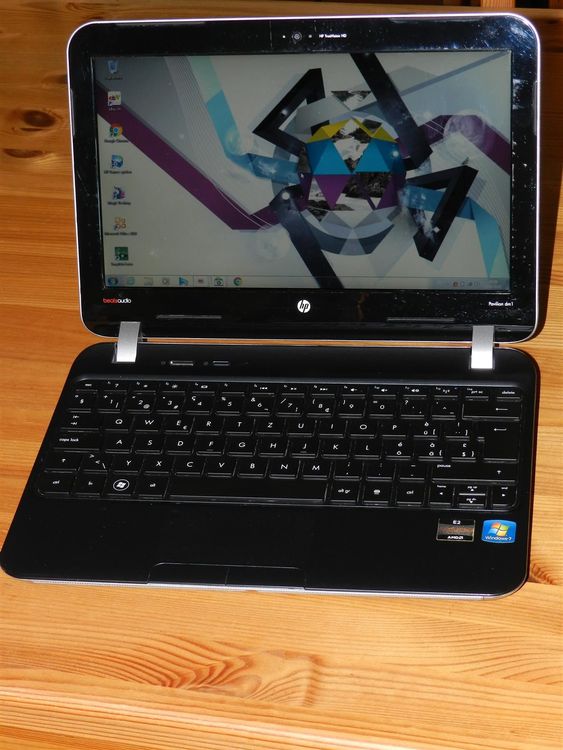

Given the tendency towards WiFi I hadn’t even noticed that until just before I took the picture, and left the cover slightly ajar so it would be more visible. Hidden just beyond the monitor connection is an ethernet port. On the right side there is a SD card slot, a 3.5mm headphone jack, 2x USB 2.0 ports, and a monitor connection. On the left side there is the power connection, heat sink and fan vent, full-sized HDMI port, and USB 2.0. The dm1z has the normal array of ports distributed on both sides.

I find the experience of using it extremely comfortable, with the keys sized and spaced similarly to those on my Sony Vaio S-series.Īs for the track pad … we’ll get back to that later. The reason the screen bezel is somewhat large is to accommodate an excellent keyboard. Speaking of things better than I expected – the keyboard. It was honestly much better than what I expected: I had figured that the cost savings would occur here – but clearly not. The screen itself is bright and sharp, and has a great range of viewing angles. Looking at the image of the laptop in open configuration, you get a feel of the size of the system compared to the 11.6″ screen with bezel. It works very well keeping the screen closed and preventing flopping around. The lid is not latched, but instead held with a friction seal. Again – you are not expecting distinctive looks in a laptop at this price point. The cover has a textured black surface with a design and a stylish HP logo built-in. The overall system is mostly made of plastic, yet sports an attractive top cover that caught the eye of my family immediately. There are ‘build to order’ as well as pre-configured options available to customize the Pavilion series, and the top-line pre-configured choice on the HP website was identical to the unit I tested: At 11.6″ the screen is the same size as the Alienware m11x, so I see that size as a great opportunity to offer greater performance in a smaller package – which is exactly what was promised by AMD’s Fusion technology implemented in the dm1z. HP Pavilion dm1z (Starting at $399.99, as configured without Blu-ray $419.99, with Blu-ray $530.48)Īs I said, the Pavilion dm1z falls into that odd category of being slightly larger than a traditional (7-10″) netbook, yet smaller than the traditional small laptops (~13″).

* The standard inline 6-cell battery gives up to 9 hours and 30 minutes of run time, starts at 3.5 pounds and is 1″ slim. * A scewless bottom panel gives easy access to the internal components of the system for any consumer upgrades.
#HEWLETT PACKARD PAVILLION DM1 SOFTWARE#
The software offers a maximum cooling, quiet or optimized performance setting and with the included accelerometer the system will automatically adjust when the system is taken on-the-go. * Includes HP’s CoolSense technology allowing the user to control the cooling settings through HP’s exclusive Thermal Assistant software. * Includes HP’s ProtectSmart which will protect the system from file loss due to accidently bumping or dropping the dm1. * Features AMD’s Fusion technology powered by an AMD Vision E350 dual-core processor offering smooth HD playback, good graphics and a great internet experience. The HP Pavilion dm1z laptop falls into that category, and I was thrilled with the opportunity to see what I could get from a system that topped out at $500 INCLUDING a Blu-Ray player! In many ways that system represented the death of the traditional netbook, which was followed by what many call ‘notbooks’ – computers that offer sub-12″ screens and easy portability with great battery life, but also with reasonably low-end notebook performance and a palatable price tag. Last year I looked at the HP Mini 5103, which was a traditional netbook in many ways, but also came packing the nVidia ION chipset … and a $750 price tag.


 0 kommentar(er)
0 kommentar(er)
